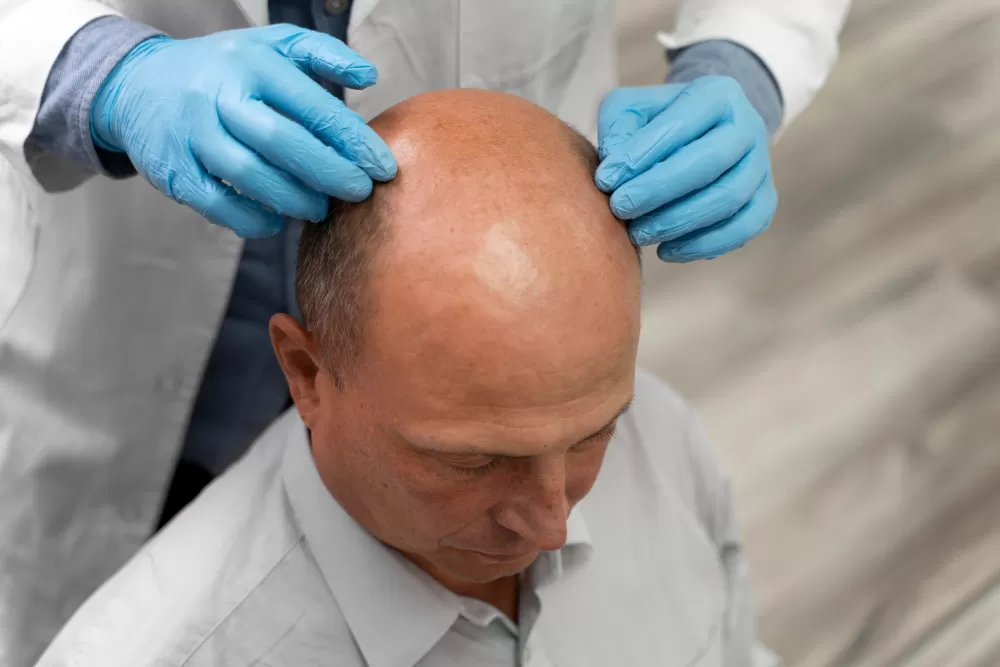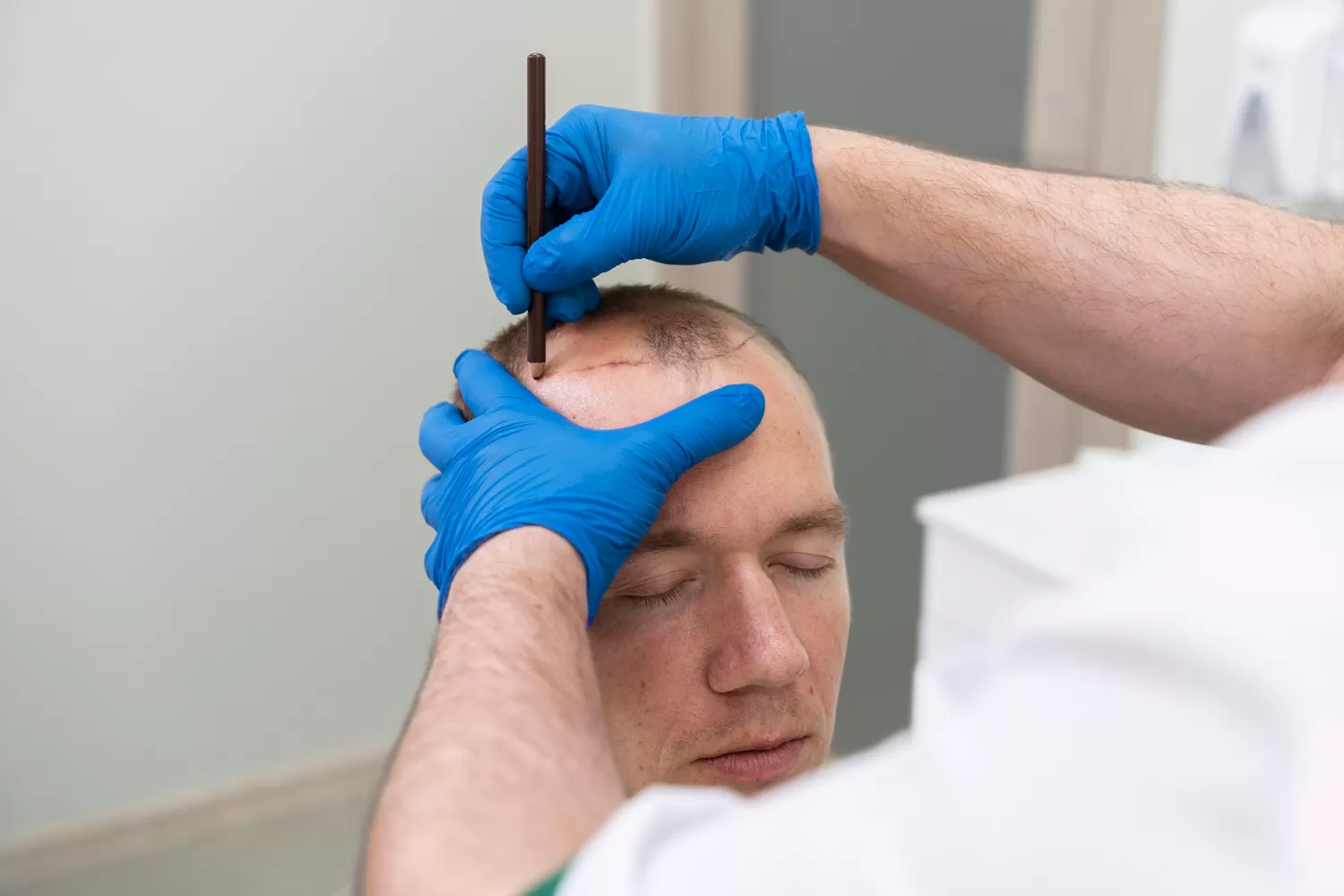Hair loss is a common condition affecting both men and women, often linked to genetic factors. Hair transplantation stands out as an effective solution for hair loss. However, the success and effectiveness of hair transplantation vary depending on an individual’s genetic makeup, the cause of hair loss, and other personal factors. In this article, we will explore the relationship between hair transplantation and genetics, identify who may benefit most from this procedure, and discuss the factors influencing the process in detail.
The Genetic Basis of Hair Loss
Hair loss, particularly male pattern baldness (androgenetic alopecia), is heavily influenced by genetic factors. Androgenetic alopecia is the most common type of hair loss seen in both men and women.
What is Androgenetic Alopecia?
Androgenetic alopecia results from a combination of genetic predisposition and hormonal factors. In men, it typically manifests as receding hairlines and thinning at the crown, while in women, it often presents as diffuse thinning across the scalp. This condition is associated with dihydrotestosterone (DHT), a hormone that weakens hair follicles. Individuals genetically sensitive to DHT experience more pronounced hair loss.
The Role of Genetic Factors
Hair loss is a hereditary trait influenced by family history. If your parents or close relatives experienced early hair loss, you are more likely to face the same issue. Genetic predisposition determines the sensitivity of hair follicles to DHT, which can also impact the outcomes of hair transplantation.
What is Hair Transplantation and How is it Performed?
Hair transplantation involves transferring healthy hair follicles from one part of the body (usually the back of the scalp, known as the donor area) to areas with hair loss (the recipient area). Modern techniques, such as FUE (Follicular Unit Extraction) and DHI (Direct Hair Implantation), are widely used to achieve natural-looking results.
Factors Affecting the Hair Transplantation Process
The success of hair transplantation depends on several factors:
Donor Area Quality: The density and health of hair follicles in the donor area directly affect the procedure’s success.
Degree of Hair Loss: Hair transplantation performed in early stages of hair loss tends to yield better results compared to advanced cases.
Genetic Predisposition: The likelihood of ongoing hair loss due to genetics can influence the long-term success of the transplant.
Age: In younger patients, ongoing hair loss may require careful planning for transplantation.
Overall Health: Conditions like diabetes, hypertension, or immune system disorders can impact the healing process.
Who Benefits More from Hair Transplantation?
Hair transplantation does not yield the same results for everyone. Certain individuals, due to their genetic and physiological characteristics, may benefit more from the procedure.
Characteristics of Ideal Candidates
Ideal candidates for hair transplantation typically have the following traits:
Sufficient Donor Hair: Individuals with a dense and healthy donor area at the back of the scalp achieve better results.
Stable Hair Loss: Those with stabilized or slowed hair loss have more predictable outcomes.
Early or Moderate Hair Loss: People with hair loss that has not yet progressed to advanced stages often achieve more natural results.
Healthy Lifestyle: Non-smokers with a balanced diet and good overall health experience faster recovery.
Who May Benefit Less?
In some cases, hair transplantation may not deliver the desired results:
Diffuse Hair Loss: When hair thins evenly across the scalp, the donor area may be insufficient.
Advanced Baldness: Limited donor hair can make full coverage challenging.
Active Ongoing Hair Loss: In young individuals with ongoing hair loss, transplanted hair may not blend naturally with surrounding areas as native hair continues to shed.
Serious Health Issues: Chronic illnesses or skin conditions can negatively affect recovery.
Genetics and the Long-Term Success of Hair Transplantation
Genetic predisposition directly impacts the long-term success of hair transplantation. For instance, in individuals with ongoing androgenetic alopecia, transplanted hair typically remains permanent, but surrounding native hair may continue to shed. In such cases, post-transplant medical treatments (e.g., minoxidil or finasteride) may be recommended.
Why Are Transplanted Hairs Permanent?
Hair follicles used in transplantation are usually taken from the donor area at the back of the scalp, which is resistant to DHT. As a result, these transplanted follicles remain more resilient to hair loss in their new location. However, native hair in other areas may continue to shed due to genetic predisposition.
Genetic Testing and Hair Transplantation
In recent years, genetic testing has been used to assess hair loss risk. These tests analyze an individual’s genetic predisposition to hair loss and DHT sensitivity. Such information can aid in planning hair transplantation and determining complementary treatments.
Post-Hair Transplant Care and Genetic Factors
Post-transplant care plays a critical role in the procedure’s success. For individuals genetically predisposed to hair loss, certain measures can help maintain hair health after transplantation:
Medical Treatments: Minoxidil or finasteride, as prescribed by a doctor, can slow hair loss.
Healthy Diet: Consuming nutrients like biotin, zinc, and iron supports hair health.
Stress Management: Stress can trigger hair loss. Practices like yoga or meditation may help.
Regular Check-Ups: Routine follow-ups with a doctor can prevent potential complications.
Conclusion
Hair transplantation is an effective method for combating genetic hair loss, but its success depends on an individual’s genetic makeup, the quality of the donor area, and proper post-procedure care. Ideal candidates with sufficient donor hair, stabilized hair loss, and good overall health are more likely to achieve natural and long-lasting results. Understanding the genetic factors behind hair loss and consulting with specialists can help individuals make informed decisions about hair transplantation.





No comments yet. Be the first to comment!